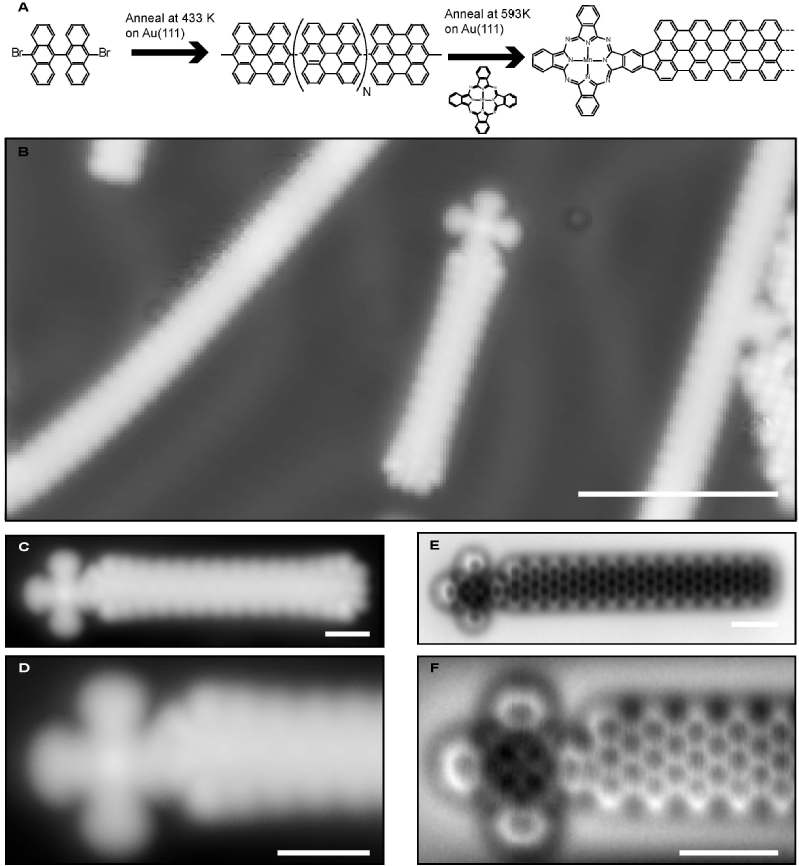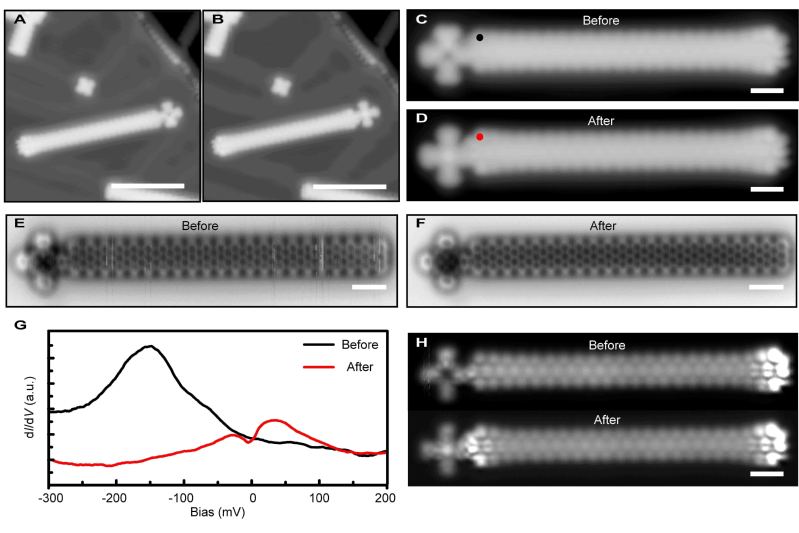Research teams led by Dr. Yu Ping and Dr. Li Gang of the School of Physical Science and Technology have found a new way for engineering the zigzag edge state of Graphene Nanoribbons with atomic precision. Their work, entitled “Edge State Engineering of Graphene Nanoribbons,” was published online in Nano Letters on August 15, 2018.
Graphene nanoribbon, a novel one-dimensional graphene nanomaterial, holds great promise for future electronic and spintronic device applications. In 2010, the Fasel research group successfully prepared graphene nanoribbons with atomically precise width by using a bottom-up on-surface synthesis method. Since then, much effort has been devoted to investigating the electronic structure of graphene nanoribbon through tuning the ribbon width or chemical doping. However, how to engineer the edge state of graphene nanoribbons with atomic precision remains unexplored.
In this study, the MnPc molecule is fused with the zigzag edge of 7-armchair Graphene Nanoribbons using an on-surface synthesis method. Using high resolution scanning tunneling microscope (STM) and atomic force microscopy (AFM), researchers observed the covalent bonding in MnPc and graphene nanoribbon junction, and the zigzag edge state of the graphene nanoribbons have energy splitting with MnPc fusing (shown in Figure 1);Moreover, the edge states of graphene nanoribbons can be successfully engineered through hydrogen atom adsorption and desorption (shown in Figure 2). In order to illustrate the physical mechanism of this phenomenon, Kelvin force spectrum (KPFS) measurements and the DFT calculations were performed. The results suggest that the electronic structure of the zigzag edge state is engineered through tuning the local doping of graphene nanoribbon edges upon the charge transfer process. The results have paved a new way for the preparation of functional graphene devices.
The paper’s first author is Su XueLei, a master student from Professor Yu Ping’s research group. Professor Yu Ping and Professor Li Gang are both corresponding authors. Their work was supported from the startup funding of ShanghaiTech University as well as the grants from the National Natural Science Foundation of China and Shanghai Natural Science Foundation.
Read more at: https://pubs.acs.org/doi/10.1021/acs.nanolett.8b02356

Fig 1. Bottom-up synthesis of MnPc fusing to the zigzag edge of AGNRs.

Fig 2. Engineering the electronic structure of the zigzag edge state.

